Structure of Golgi Apparatus
The Golgi apparatus is composed of a series of flattened membrane-bound sacs called cisternae. These cisternae are stacked on top of each other, forming a structure that resembles a stack of pancakes. The Golgi apparatus also has associated vesicles and tubules that are involved in its functions.Functions of Golgi Apparatus
The Golgi apparatus has several important functions, including:- Protein Modification: It modifies proteins that are synthesized in the endoplasmic reticulum (ER) by adding carbohydrate chains (glycosylation), phosphorylation, or other chemical modifications.
- Protein Sorting: It sorts and packages proteins into vesicles for delivery to various cellular destinations, such as other organelles or the cell membrane.
- Lipid Modification: It is involved in the modification of lipids, such as the addition of carbohydrates to lipids, which is important for the formation of glycolipids.
- Vesicle Formation: It plays a role in the formation of lysosomes and secretory vesicles, which are used for intracellular digestion and secretion, respectively.
Study Guide for Golgi Apparatus
To study the Golgi apparatus effectively, consider the following key points and topics:- Structure: Understand the structure of the Golgi apparatus, including the arrangement of cisternae and associated vesicles and tubules.
- Function: Learn about the various functions of the Golgi apparatus, such as protein modification, sorting, lipid modification, and vesicle formation.
- Comparison with Endoplasmic Reticulum (ER): Compare and contrast the functions of the Golgi apparatus with those of the endoplasmic reticulum, another important organelle involved in protein synthesis and modification.
- Role in Diseases: Explore how dysfunctions in the Golgi apparatus can lead to diseases, such as lysosomal storage disorders and certain types of cancer.
- Experimental Techniques: Study the experimental techniques used to visualize and study the Golgi apparatus, such as immunofluorescence microscopy and electron microscopy.
◂Biology Worksheets and Study Guides High School. Invertebrates
Worksheet/Answer key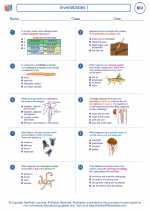 Invertebrates I
Invertebrates I  Worksheet/Answer key
Worksheet/Answer key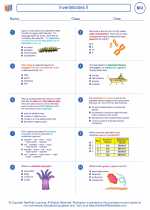 Invertebrates II
Invertebrates II  Worksheet/Answer key
Worksheet/Answer key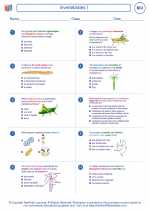 Invertebrates I
Invertebrates I  Worksheet/Answer key
Worksheet/Answer key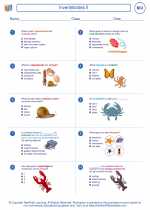 Invertebrates II
Invertebrates II  Worksheet/Answer key
Worksheet/Answer key Invertebrates I
Invertebrates I  Worksheet/Answer key
Worksheet/Answer key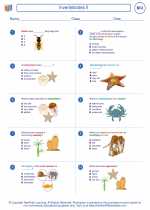 Invertebrates II
Invertebrates II  Vocabulary/Answer key
Vocabulary/Answer key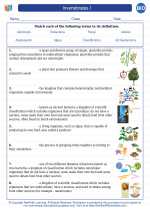 Invertebrates I
Invertebrates I  Vocabulary/Answer key
Vocabulary/Answer key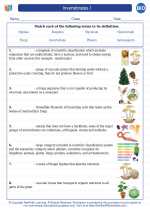 Invertebrates I
Invertebrates I  Vocabulary/Answer key
Vocabulary/Answer key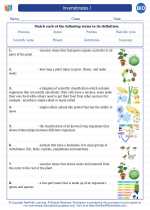 Invertebrates I
Invertebrates I 

 Worksheet/Answer key
Worksheet/Answer key
 Worksheet/Answer key
Worksheet/Answer key
 Worksheet/Answer key
Worksheet/Answer key
 Worksheet/Answer key
Worksheet/Answer key
 Worksheet/Answer key
Worksheet/Answer key
 Vocabulary/Answer key
Vocabulary/Answer key
 Vocabulary/Answer key
Vocabulary/Answer key
 Vocabulary/Answer key
Vocabulary/Answer key

The resources above cover the following skills:
Concepts of Life Science (SC1, SC2, SC3)
The student demonstrates an understanding of the structure, function, behavior, development, life cycles, and diversity of living organisms by describing the structure-function relationship